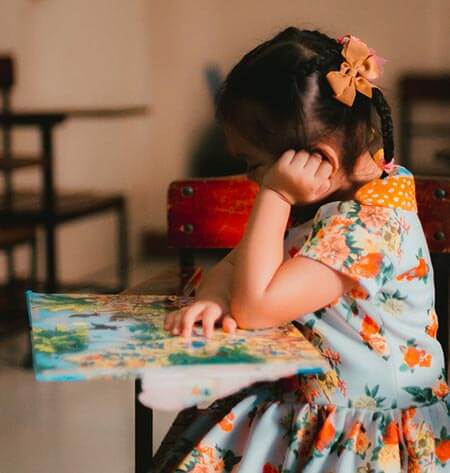
Eye Conditions that Impact Children
Eye conditions can impact over 6 children in every class.
Here is a brief guide to the most common eye conditions, with a brief explanation.
Please contact us if you have any concern of your child’s eyes or vision.
1. Amblyopia ‘Lazy-Eye’
In this condition, the brain “prefers” one eye over the other and disregards the image of the neglected eye. As a result, the brain supports the strong eye, causing the lazy eye to become weaker.
Developmental optometrists, such as Dr. Angela Bergin, use vision therapy to improve visual skills. This includes a variety of ocular exercises, prism glasses and special software to correct amblyopia in children and adults.
2. Convergence Insufficiency
To achieve clear vision, both eyes need to function in coordination with each other at all times — a process called binocular focusing. Convergence insufficiency refers to the inability to maintain a binocular focus at a near distance.
This can cause objects to appear in double, have a halo or blurry outline, or “float” on the page.
This condition cannot always be detected through vision screening, and therefore a more in-depth eye examination is required. Furthermore, glasses or surgery cannot correct this convergence insufficiency. It can only be improved using vision therapy which uses a series of tools and techniques to improve eye coordination abilities.
3. Focusing Problems
A person may have perfect vision while focusing, but what happens when the eyes can’t maintain their focus?
What if changing the focus continuously, from distance to near and back, is challenging? If you have ever tried to adjust a camera lens manually, you will understand what it takes. Imagine having to constantly readjust your focus within milliseconds.
The ability to establish and sustain simultaneous focus is crucial for reading or copying from the board, as the eyes need to adjust from near to far, and back again. These problems can usually be successfully treated with vision therapy.
4. Eye-Tracking
Eye-tracking skills are essential for carrying out a number of common visual actions, such as following a moving object, directing hand movements and scanning for information.
All of these can be highly challenging when eye movements are slow or irregular.
Because eye tracking problems don’t just disappear with age, it is important to treat the condition as early as possible. Designated eye exercises and vision therapy can help enhance these skills.
5. Strabismus ‘Crossed Eyes’
Strabismus, also known as an “eye turn” or “cross-eye”, is a condition characterized by the improper alignment of the eyes. One eye may look straight ahead, while the other turns inward, outward, upward, or downward.
Only in severe cases do the eyes actually “cross” or point to the nose. It’s more common for the eyes to point in different directions to focus, a deviation you may not even notice.
However, eye turns can lead your child to experience difficulty reading or concentrate on near tasks, resulting in exhaustion after homework or reading and headaches.
Depending on its cause and severity, vision therapy can effectively correct strabismus. In cases where surgery is required (due to weakened eye muscles), the two can be combined.
